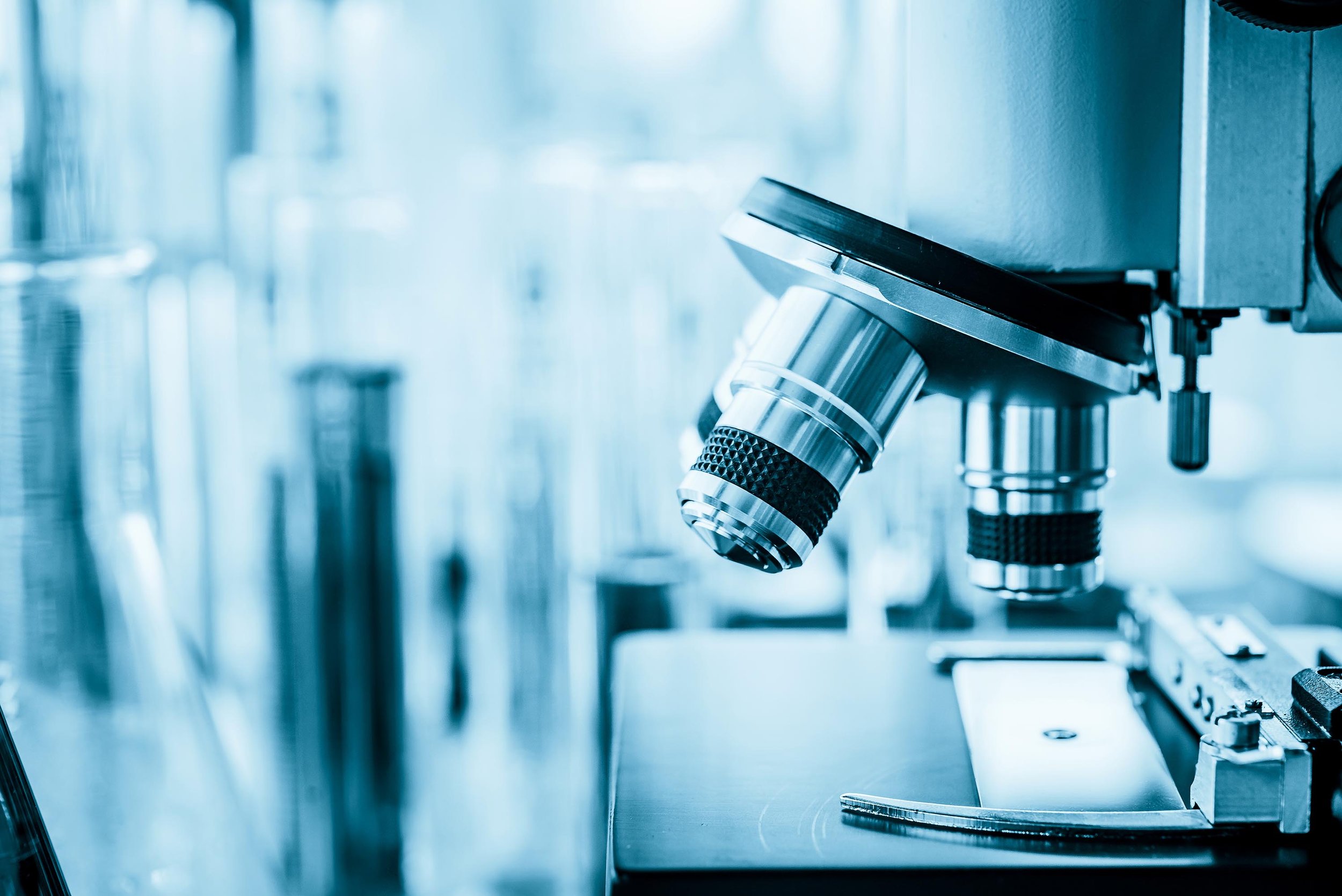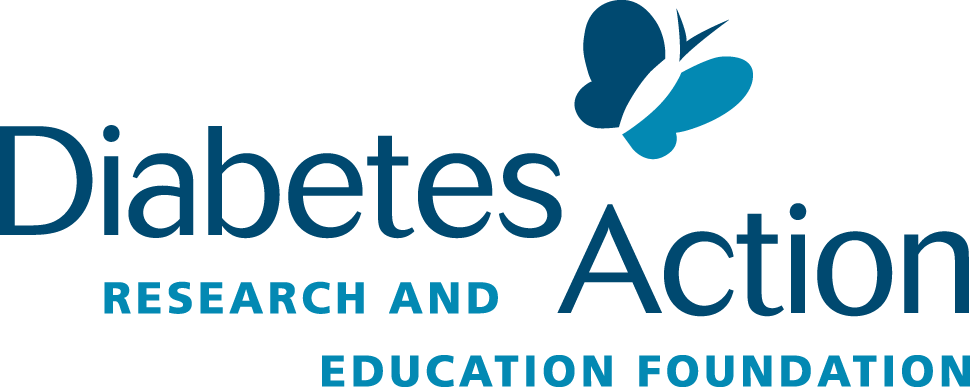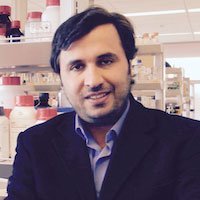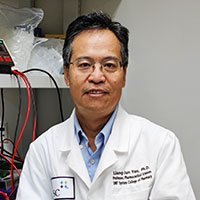
PAST RESEARCH
2023
Home > Research > Past Research > 2023
Cure for Type 1 Diabetes
PRECISION BIOLOGICS FOR THE TREATMENT OF TYPE 1 DIABETES
Researcher:
Teresa P. DiLorenzo, Ph.D.
Professor
Albert Einstein College of Medicine
Bronx, NY
Purpose:
Beta cells in the islets of Langerhans in the pancreas are responsible for making insulin. This hormone is needed to regulate the use of sugar in the body. Type 1 diabetes is an autoimmune disease that occurs when the T cells of the immune system kill the beta cells and insulin can no longer be made. Inhibiting or eliminating all of the T cells of the body could prevent, slow, or even reverse type 1 diabetes. However, this would lead to serious side effects such as increased infections and cancer, which are normally battled by T cells. The new approach by Dr. DiLorenzo’s lab utilizes special proteins that only inhibit the T cells that are responsible for destroying the beta cells. This should prevent, slow, or reverse the disease without having bad side effects.
A PROGRAM FOR THE CURE OF TYPE 1 DIABETES USING A GENERIC DRUG: PHASE II
Researcher:
Denise L. Faustman, MD, PhD., Associate Professor
Harvard Medical School and Director Immunobiology Laboratory
Massachusetts General Hospital
Charlestown, MA
Purpose:
Dr. Faustman’s research centers on the benefits of BCG vaccine even for those with established type 1 diabetes. These discoveries now allow people beyond new onset diabetes to benefit from this innovative therapy. The BCG vaccine is a 125-year-old generic drug originally identified for prevention of tuberculosis, but now clinical trials show the benefits extend to those with type 1 diabetes, autoimmune multiple sclerosis, and in the broad prevention of infections. In 2018 the Faustman research group identified that repeat BCG vaccines could lower blood sugars from 10-18% by correcting an underlying defect in metabolism of white blood cells. This benefit was seen even in those who have had type 1 diabetes for decades. With BCG treatment, the blood sugars stably dropped by allowing the diabetic white blood cells to now use sugar as an energy source and yielded safe and fine regulatory blood sugar control. In 2022, a Phase II double blinded clinical trial began with subjects from 11-18 years of age who had diabetes for more than two years. Dr. Faustman’s group, through clinical trial, is also showing the susceptibility of type 1 diabetes to infections which also improved with this established and safe vaccine.
CURING DIABETES THROUGH LOCAL IMMUNOTHERAPY OF TRANSPLANTED CELLS
Researcher:
Douglas Sobel, MD
Professor of Pediatrics, Chief Pediatric Endocrinology
Georgetown University
Washington, DC
Purpose:
Islet cell transplantation is a promising treatment of type 1 diabetes. However, the present method for transplanting islets is not very effective and causes severe side effects due to immunosuppressant therapy. To avoid such toxicities Dr. Sobel’s lab devised a device where only small non-toxic amounts of immunomodulatory drugs within the device prevents rejection of islets in mice. Dr. Sobel found two combinations of drugs within the device that cures diabetes. To develop this method to cure diabetes, this study proposes to determine: 1) which single drug within the combination of drugs has the most protecting effect on transplanted MIN cells; 2) what is the minimum drug dose(s) required to inhibit MIN rejection 3) how does the drug work; and 4) determine if mice previously transplanted with a device are able to effectively receive a second device. Successful completion of this proposal may allow future work to create a similar device to cure diabetes in humans.
Islet cell research
3D BIOPRINTING OF IPSC-DERIVED ORGANOIDS FOR FABRICATION OF PANCREATIC DEVICES
Researcher:
Ibrahim T. Ozbolat, Ph.D.
Associate Professor
The Pennsylvania State University
University Park, PA
Purpose:
In Dr. Ozbolat’s original project, he aimed to bioprint pre-vascularized pancreatic islets made of mouse insulinoma cells and rat heart microvascular endothelial cells into a perfusion bed in order to create a perfusable platform for microcirculation of the engineered islets. With additional funding, Dr. Ozbolat proposes a new approach and aim to 3D build rationally designed engineered pancreatic organ substitutes via 3D bioprinting using stem-derived vascularized human islets. Accomplishing these goals will establish a novel approach in fabrication of a scalable pancreatic organ substitute for type 1 diabetes.
diabetes prevention
AMERICAN INDIAN YOUTH WELLNESS INITIATIVE
Researcher:
Francine Gachupin, Ph.D., MPH
Associate Professor
University of Arizona College of Medicine
Tucson, AZ
Purpose:
Health behaviors, particularly when adopted early in life, can modify obesity risk and associated morbidities and circumvent a trajectory of life-long chronic disease. Dr. Gachupin has conducted American Indian youth summer camps to promote healthy eating and physical activity that resulted in improved cardiometabolic health. To build on this success and to enhance the impact of their efforts, the intervention must transfer camp-acquired knowledge, skills, and behaviors to the home setting. The goal of this American Indian Youth Wellness Initiative is to develop and test a culturally relevant, school-based, community-led intervention that incorporates the principles of Mind-Body Medicine skills training and parental/caregiver engagement to support American Indian youth in achieving healthy lifestyle choices and reducing risk for obesity and related metabolic diseases. This project will engage on school in Tucson, Arizona; the Ha:Sañ Preparatory & Leadership School.
COMPLEMENTARY / NUTRITION RESEARCH
DEVELOPMENT OF NOVEL TREATMENT USING NATURAL PRODUCTS FOR OBESITY AND TYPE 2 DIABETES
Researcher:
Dongmin Liu, PhD
Professor
Virginia Polytechnic Institute and State University
Blacksburg, VA
Purpose:
Type 2 diabetes (T2D) is a result of defects in insulin action and loss of insulin secreting cells, which are largely driven by overweight and obesity. The goal of this research is to develop novel, alternative treatment using natural products to prevent and treat both obesity and T2D. Dr. Liu’s lab discovered for the first time that elenolic acid (EA), a compound present in mature olive and olive leaf extract, acts in the gut to promote release of two hormones critical for managing body weight and blood sugar, while sulforaphane, a compound derived from brussels sprout, enhances insulin action. In this project, we will use T2D mice to investigate whether dietary intake of both EA and sulforaphane with complementary mechanisms of action is more effective in treating T2D by simultaneously reversing the defects leading to this disease. The results could lead to developing safe and complementary approach for obesity and T2D treatment.
TREATING AND PREVENTING COMPLICATIONS
RESTORE URIDINE HOMEOSTASIS IN T1D TO PREVENT DKA
Researcher:
Yingfeng Deng, Ph.D.
Assistant Professor, Department of Diabetes & Cancer Metabolism
Beckman Research Institute, City of Hope
Duarte, CA
Purpose:
Diabetic ketoacidosis (DKA), a serious complication of hyperglycemia, occurs primarily in patients with type 1 diabetes (T1D). Blood uridine is elevated in patients with T1D. Dr. Deng’s recent findings suggest that high uridine in T1D exacerbates the energy deficit in cell, which increases the demand of cell for ketone bodies and promotes DKA. The application will examine the adverse impact of high uridine on DKA and the usage of leptin in stimulation of uridine clearance in T1D. This research will deliver unprecedented insight into how uridine homeostasis is regulated by leptin, how uridine homeostasis disruption affects glycemic control and how to restore the dynamic homeostasis of uridine in T1D through combinatory use of leptin and insulin. Lastly, Dr. Deng’s lab will explore the potential of uridine phosphorylase in uridine clearance in T1D, which will provide a crucial basic platform for designing and testing novel therapeutic strategies for the treatment of T1D and DKA.
TARGETING MPC TO TREAT HYPERLIPIDEMIA
Researcher:
Lei Jiang, Ph.D.
Assistant Professor, Molecular & Cellular Endocrinology
Beckman Research Institute, City of Hope
Duarte, CA
Purpose:
People with obesity are almost 6 times more likely to develop type 2 diabetes (T2D), compared with people of normal weight. In the United States, more than 70% of adults are overweight or obese, caused primarily by excess energy intake (carbs and fat) in modern society. Many patients with T2D have hyperlipidemia, which contributes to the development of other T2D-related metabolic disorders. Brown fat (a special kind of fat tissue) can naturally “burn” off a significant amount of energy in the form of carbs and fat. Unfortunately, this special activity of brown fat dramatically declines in obese individuals, contributing to the development of obesity-related metabolic disorders. Dr. Jiang’s earlier study found mitochondrial pyruvate carrier (MPC) plays a central role in this “burning” process. This study aims to target MPC to treat hyperlipidemia in T2D.
ELUCIDATING THE ASSOCIATION OF RNA DAMAGE WITH DIABETIC KIDNEY DISEASE
Researcher:
Sara Shuck, Ph.D.
Assistant Professor
Beckman Research Institute of the City of Hope
Duarte, CA
Purpose:
More than 30% of individuals with type 1 diabetes (T1D) develop diabetic kidney disease (DKD), which increases mortality. The Diabetic Complications and Control Trial (DCCT) enrolled thousands of patients with T1D and determined that poor glycemic control (HbA1c 9) increased the risk of DKD. This risk remained elevated despite future strong glycemic control (lowering HbA1c to 7). Dr. Shuck’s research discovered that RNA is a target for modification by products of sugar metabolism, which are elevated in individuals with T1D. To determine if these RNA modifications are associated with DKD and glycemic control, Dr. Shuck measured them in patient samples from the DCCT trial. This study proposes to determine if RNA modifications remain elevated despite switching from poor to strong glycemic control, serving as potential biomarkers of DKD risk and long-term cellular changes.
TESTING NOVEL IMMUNOTHERAPY TO TREAT DIABETES-INDUCED KIDNEY FAILURE
Researcher:
Kai Y. Xu, Ph.D.
Associate Professor of Surgery
University of Maryland School of Medicine
Baltimore, MD
Purpose:
Kidney failure is a life-threatening condition, and type 1 diabetes (T1D) causes kidney failure. (Na++K+)-ATPase (NKA) is a key protein critical to kidney function. Studies have shown that a significant reduction of NKA activity is strongly associated with T1D-induced kidney failure, indicating that dysfunction of NKA participates in the mechanism of T1D-induced kidney failure. Dr. Xu’s lab has developed unique NKA antibody activators, which specifically bind to NKA and markedly augment NKA activity. Dr. Xu hypothesizes that protecting cellular NKA activity by administering NKA antibody activator may offer a new disease-modifying intervention to prevent and cure T1D-induced kidney failure. This research aims to test the hypothesis and examine the NKA activator-based immunotherapy on protecting kidney function against the progression of T1D-induced kidney failure in a T1D Diabetes-Prone BB rat animal model. The success of proposed investigations may revolutionize the current strategy to cure T1D-induced kidney failure to benefit patients.
TARGETING MITOCHONDRIAL COMPLEX I SUPEROXIDE PRODUCTION TO AMELIORATE DIABETIC KIDNEY DISEASE
Researcher:
Liang-Jun Yan, Ph.D.
Professor of Pharmaceutical Sciences
University of North Texas Health Science Center
Fort Worth, TX
Purpose:
Diabetic kidney disease (DKD) is a major cause of end stage renal disease. Despite extensive studies, the pathogenesis of DKD still remains elusive. Therefore, there is a need to investigate the mechanisms underlying DKD to explore treatment options. While oxidative stress-induced kidney cellular injury is thought to contribute to the development of DKD, mechanisms and targets remain to be defined. In this project, Dr. Yan’s lab will investigate the therapeutic effect of a compound that inhibits oxidative stress. They also propose to study the mechanism underlying the therapeutic value of this compound. Results of this project may unravel a novel target that can be used to fight DKD and therefore save lives.











